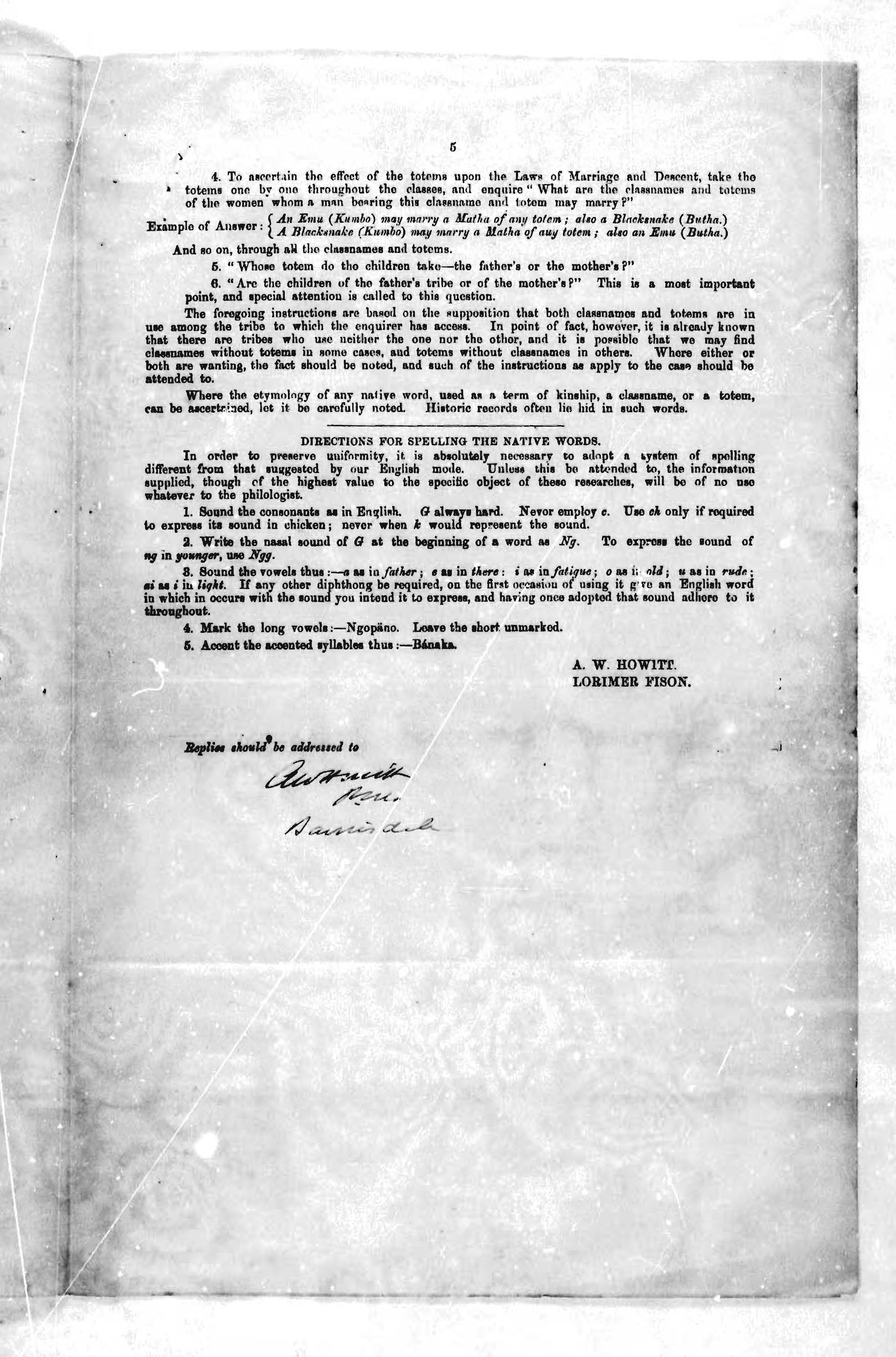Questionnaire sent to Rev Stahle

Transcription - Page 4
5
4. To ascertain the effect of the totems upon the Laws of marriage and Descent, take the
totems one by one throughout the classes, and enquire "What are the classnames and totems
of the women whom a man bearing this classname and totem may marry?"
Example of an Answer:- { [Italics: An Emu (Kumbo) may marry a Matha of any totem; also a blacksnake (Butha.)
A blacksnake (Kumbo) may marry a Matha of any totem; also an Emu (Butha.)] }
And so on, through all the classnames and totems.
5. "Whose totem do the children take - the father's or the mother's?"
6. "Are the children of the father's tribe or of the mother's?" This is a most important
point, and special attention is called to this question.
The foregoing instructions are based on the supposition that both classnames and totems are in
use among the tribe to which the enquirer has access. In point of fact, however, it is already known
that there are tribes who use neither the one nor the other, and it is possible that we may find
classnames without totems in some cases, and totems without classnames in others. Where either or
both are wanting, the fact should be noted, and such of the instrcutions as apply to the case should be
attended to.
Where the etymology of any native word, used as a term of kinship, a classname, or a totem,
can be ascertained, let it be carefully noted. Historic records often lie hid in such words.
[Line across page]
DIRECTIONS FOR SPELLINGTHE NATIVE WORDS.
In order to preserve uniformity, it is absolutely necessary to adopt a system of spelling
different from that suggested by our English mode. Unless this be attended to, the information
supplied, though of the highest value to the specific objects of these researches, will be of no use
whatever to the philologist.
1. Sound the consonants as in English. [Italics: G] always hard. Never employ [Italics: c]. Use [Italics: ch] only if required
to express its sound in chicken; never when [Italics: k] would represent the sound.
2. Write the nasal sound of [Italics: G] at the beginning of the word as [Italics: Ng]. To express the sound of
[Italics: Ng] in [Italics: younger], use [Italics: Ngg].
3. Sound the vowels thus:- [Italics: a] as in [Italics: father]; [Italics: e] as in [Italics: there]: [Italics: i] as in [Italics: fatigue]; [Italics: o] as in [Italics: old]; [Italics: u] as in [Italics: rude]:
[Italics: ai] as [Italics: i] in [Italics: light]. If any other dipthong be required, n the first occasion of using it give an English word
in which it occurs with the sound you intend it to express, and having once adopted that sound adhere to it throughout.
4. Mark the vowels:- Ngopäno. Leave the short unmarked.
5. Accent the accented syllables thus:- Bánaka.
A.W. HOWITT
LORIMER FISON.
Replies should be addressed to
A. W. Howitt
[??]
Bairnsdale
Document Details
